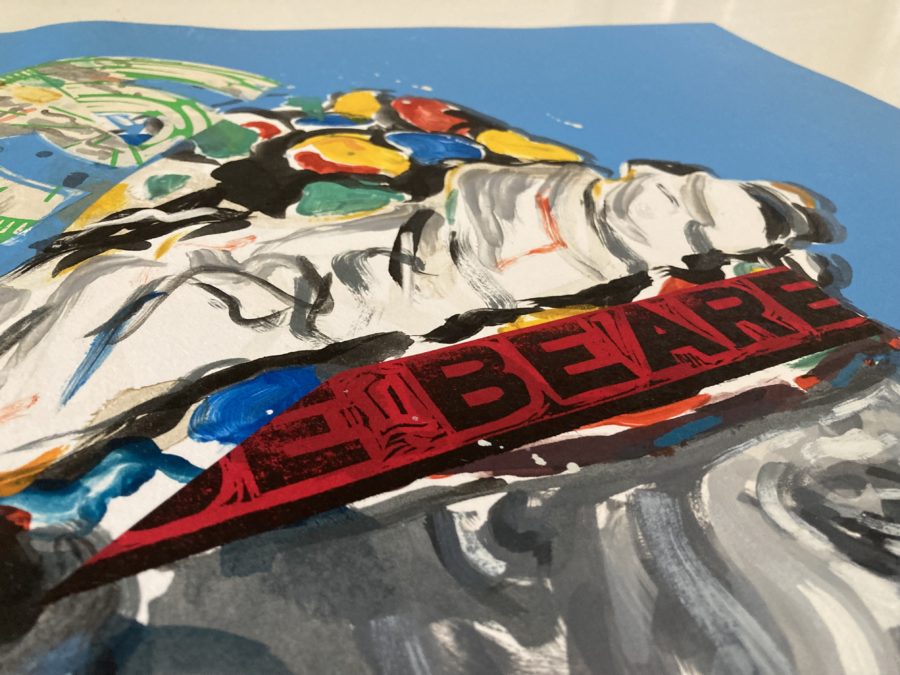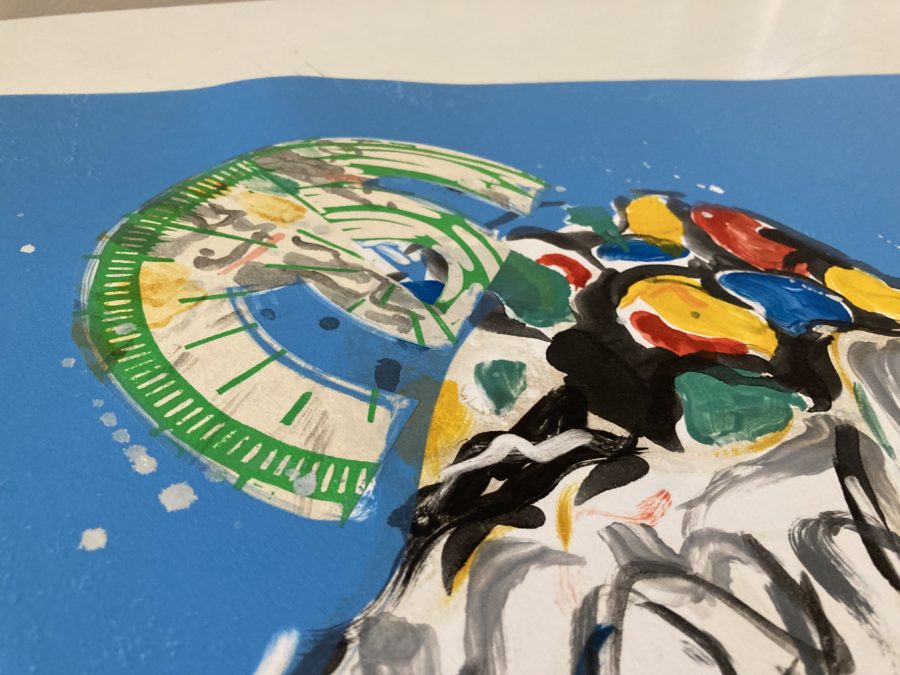Mandla Mavengere is a Johannesburg-based multidimensional visual artist, whose works speak to the diversity and inequalities of labour, the hardships of migration and the monetary value of goods and services rendered. In 2021 he and the David Krut Workshop printer Sbongiseni Khulu collaborated on a body of oil-based monotypes on paper. For this edition of Print of the month we have chosen an oil based monotype The Go Getter, that Mandla created at the David Krut Workshop.

First things first… What is an oil-based monotype? Monotypes are known to be called the “painterly print” as well as the “printer’s painting”. As David Krut has described it, a monotype can essentially be viewed as a painting that just happens to have gone through a press, leaving a distinct quality of mark different to ones found with more traditional painting. In this case the paint that was used is oil-based which takes longer to dry than water based mediums.






Included in some of Mavengere’s works are chine collé and collage elements created by printing his signature hand carved “Gondruala” linocut bank notes onto paper that is adhered to the works in the printing process. that results in a two-layered paper support: a tissue-thin paper, cut to the size of the printing plate, and a larger, thicker support paper below. Both the tissue and the support sheet are placed on top of the inked plate and run together through the printing press, sometimes with a thin layer of adhesive between them to reinforce the bond produced through the pressure of the press. The process creates a subtle, delicate backdrop to the printed image. Chine is the French word for China, referring to the fact that the thin paper originally used with this technique was imported from China. In addition to China, paper was also imported from India or Japan. Collé is the French word for “glued.”






“My artworks bring into conversation and discussion, the issues of migration in our contemporary society. They reflect on socio-economic migration and the shift of personal identity, whilst exploring the journey of wealth-seeking from within.”
Mandlenkosi Mavengere
More about Mandlenkosi Mavengere:
Mandlenkosi Mavengere was born in 1992 in Zimbabwe in Bulawayo. Mavengere’s works are predominantly a combination of printing and painting. He moved to South Africa after completing high school in Zimbabwe. It was in South Africa where he took up art as a career. This led to him being recommended for a yearlong internship at William Kentridge Studio in 2017. This mentorship by William Kentridge significantly developed his innovation, storytelling skills, and further exploration of the theme of migration. Mavengere’s works have since been featured in various prestigious local and international exhibitions, including locations such as France, Belgium, and Germany.
His artworks bring into conversation and discussion the issues of migration and labour relations in contemporary society. Mavengere is an accomplished printmaker, as his linocut banknotes are used prominently in his artworks. The banknote artworks are a framework within which one can observe the issues of migration with relevance to socio-economic divergence of identity and convergence of another. The directional lines in the banknotes depict the scattering of people and population displacement; the repetition of patterns symbolise the circumstantial economic system embedded to the stereotyped migrants. The linocut banknotes printed onto the fabric emphasise the constructed perambulation of the population in search for income and better life. The figures and portraits are economically fabricated identities who are fitting into a new homeland of occupation versus the home of origin.